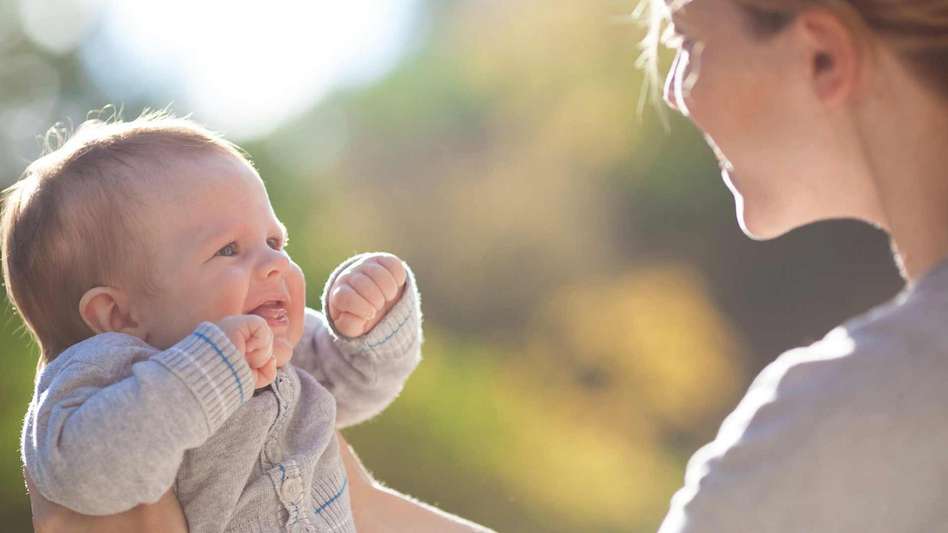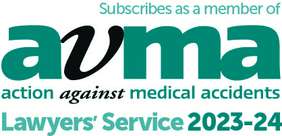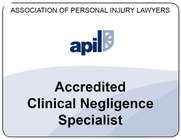Cerebral palsy, medical negligence claims

Causes & symptoms of cerebral palsy
What is cerebral palsy?
Cerebral palsy is a type of brain abnormality, normally caused by a problem with a baby’s brain before, during or shortly after birth. It usually occurs during the baby’s development in the womb or at or around the time of birth. It can affect mobility, co-ordination and lead to developmental problems. Cerebral palsy is a chronic, lifelong condition, with a range of physical and developmental symptoms. Children with cerebral palsy may be unable to reach various developmental milestones, depending on how severe their condition is.
Take a look at our recent cerebral palsy cases.
In this article
- Is there a cure for cerebral palsy?
- Cerebral palsy symptoms
- What causes cerebral palsy?
- What causes cerebral palsy during pregnancy?
- Cerebral palsy risk factors
- Developmental problems in the womb
- Problems during labour and delivery
- How is cerebral palsy diagnosed?
- How doctors recognise cerebral palsy in babies
Is there a cure for cerebral palsy brain injuries?
There is no cure for cerebral palsy. It is a lifelong neurological condition but care plans can be put in place to make the child’s life as comfortable as possible. Cerebral palsy is not a progressive condition. The condition itself does not become progressively worse over time, although its symptoms may develop and become worse.
Cerebral palsy can be managed, and appropriate assistive technology and treatments can help the child and family. Treatment for cerebral palsy can improve mobility, motor functions and overall quality of life. With the right treatment and support, some people with cerebral palsy can enjoy full and independent lives.
When the symptoms of cerebral palsy are particularly severe it can be a life-threatening condition. In such cases, it can affect life expectancy. People with severe forms of cerebral palsy may require full-time care.
Cerebral palsy symptoms
The NHS describes four main types of cerebral palsy, with different symptoms for each:
- Spastic cerebral palsy: causes particularly stiff muscles and lack of mobility
- Dyskinetic cerebral palsy: causes random, uncontrolled movements
- Ataxic cerebral palsy: affects balance and coordination and can cause tremors
- Mixed cerebral palsy: when a person has a mixture of the above types
Every case of cerebral palsy is unique. Cerebral palsy can be described as being mild, moderate or severe. The effects and severity of the symptoms can vary significantly from person to person, and can include: epilepsy, cognitive impairments, paralysis and mobility problems.
What causes cerebral palsy?
Cerebral palsy is caused by an injury to the brain. This can happen if the brain fails to develop normally in the womb, if there is a problem during delivery or just after the baby is born.
The exact reason why some children develop cerebral palsy isn’t always clear. It happens for unknown reasons. However, some cases of cerebral palsy are caused by injury to the brain during labour, delivery or shortly after birth.
The most common cause of cerebral palsy shortly before, during or just after birth (the perinatal period) is oxygen deprivation. There are two types of oxygen deprivation:
- reduced oxygen supply to the baby’s brain (hypoxia)
- very severe hypoxia, which causes a lack of oxygen to the brain (anoxia).
What causes cerebral palsy during pregnancy?
A range of situations during pregnancy and labour can cause oxygen deprivation – including problems with the placenta or the mother’s health. Whatever the cause, doctors and midwives are trained to recognise possible signs of oxygen deprivation and treat it quickly. Cerebral palsy can be caused by other things, such as congenital (in-born) abnormalities of the brain, brain infections etc.
Call for a FREE initial consultation on 0800 013 1165
Cerebral palsy risk factors
Risk factors do not cause cerebral palsy, but doctors associate a number of risk factors with an increased change of a baby being born with cerebral palsy. These include:
- any significant complications during labour and the baby’s delivery, especially a reduced supply of oxygen to the baby’s brain
- if the mother and the baby have incompatible blood types
- the mother suffers from a viral disease early in her pregnancy
- the mother experiences blood clotting problems (thrombophilia)
- the mother suffers a bacterial infection which attacks the baby’s central nervous system
- problems with the mother’s placenta resulting in a reduction of oxygen and supply of nutrients to the baby as it develops in the womb
- the baby being born prematurely (at less than 37 weeks’ gestation)
- the baby being particularly small for its gestational age and has a low birth weight
- the baby being deprived of oxygen during pregnancy, delivery or shortly after delivery.
If a baby is at risk of developing preventable cerebral palsy, care providers should put a plan in place to manage the pregnancy and delivery. Typically, the plan might involve: increased monitoring of the pregnancy, increased involvement from a consultant and recommendations about the type of delivery and timing of the delivery. The mother should be told to keep an eye on the frequency of the baby’s movements in the womb.
Some cases of cerebral palsy are unavoidable, and the condition is not always caused by medical negligence. However, it is always worth asking for advice if your baby is born with cerebral palsy – as a solicitor can help determine whether you have a claim.
Developmental problems in the womb
If the baby’s brain doesn’t develop properly in the womb it can cause cerebral palsy. Developmental problems can happen if:
- the baby suffers a brain injury caused by oxygen deprivation in the womb (hypoxia or anoxia)
- the baby gets an infection from the mother while in the womb (e.g. toxoplasmosis)
- the baby suffers a stroke at or around the time of birth
- there is a traumatic injury to the baby’s head while in the womb.
The majority of cerebral palsy birth injury claims are the result of oxygen deprivation to the baby’s brain during labour and delivery. Oxygen deprivation can be caused by doctor or midwife negligence, when the team fails to notice that the baby is being starved of oxygen. Negligence can also arise if the team notices signs of problems with the baby’s oxygen supply, but fail to act quickly enough (or at all) to the situation.
Problems during labour and delivery
A traumatic birth injury can cause cerebral palsy. A birth injury can be something that happens during the mother’s labour, delivery or during the neonatal period.
Traumatic birth injury can be caused by:
- oxygen deprivation (severe hypoxia)
- an infection of the brain, such as meningitis
- a traumatic head injury
- a neonatal stroke.
Mother and baby should be monitored during labour and delivery, to ensure that all is well and there are no complications. The baby’s heart beat should be regularly checked and recorded, sometimes through cardiotocography (CTG). Midwives and doctors are trained to recognise abnormalities in a CTG, and other potentially dangerous situations during labour. They should take appropriate steps if there are complications or abnormalities during labour. Failure to do so can have serious consequences for the health of mother and child, including cerebral palsy.
Signs of cerebral palsy
Cerebral palsy affects how babies develop and can affect movement, co-ordination and cognition.
How is cerebral palsy diagnosed?
Cerebral palsy affects the development of a baby’s motor functions. Cerebral palsy may delay, or prevent, babies reaching their developmental milestones. Developmental milestones are important because they indicate whether or not a child is developing as expected.
Major milestones for babies include:
- holding head up independently by around 5-6 months old
- rolling over by around 6-7 months old
- crawling by around 6-9 months old
- grasping small objects (pincer grasp) by around 9-12 months old.
Every baby in the UK is given a new-born check by a midwife or paediatrician following birth. Babies with suspected problems are looked after by paediatricians. If a midwife suspects that there may be a problem with a baby she must ask a paediatrician to examine the baby.
The NHS states that most cases of cerebral palsy will be apparent by the age of 2 years. Normally, children with cerebral palsy will show some signs and symptoms by their second birthday. However, the extent of their condition may not be fully evident until the child is much older. Normally, doctors can make a full diagnosis around adolescence, once the child has stopped growing. Most major problems are picked up at or around the time of birth.
How doctors recognise cerebral palsy in babies
Babies with cerebral palsy may be able reach some developmental milestones as normal but have trouble reaching others. They might reach some developmental milestones on time, but fail to reach subsequent ones or reach them later than is considered normal. In other words, their development may ‘plateau’.
Although cerebral palsy is normally caused by a problem with the brain at birth, it can take years for doctors to make a final diagnosis. Doctors need time to establish how severely the child is affected, and which developmental milestones they’re able to reach. Parents may notice that their child fails or struggles to reach important milestones such as holding up his/her head independently, crawling or walking. Failure to reach these milestones might indicate a neurological problem, including cerebral palsy.
Babies with cerebral palsy might have problems with their movement and co-ordination. Possible signs include difficulty controlling their movements, muscle weakness and tremors.
Cognitive impairment (‘learning disabilities’) sometimes accompany cerebral palsy. People with cerebral palsy may suffer from some form of cognitive impairment. Some children with cerebral palsy are of normal intelligence. The level of impairment varies individually. About 30-50% of people with cerebral palsy experience some form of cognitive impairment. It can effect speech, memory, attention span and ability to process emotions.
Cerebral palsy negligence claims
If you are concerned about the care you received during your pregnancy, and think it might have caused a problem you may be eligible for compensation. Our birth injury claims specialists will listen to your experience, and help you find out what happened during your care. We will need to obtain the mother’s obstetric records and the baby’s neonatal, paediatric and health visitor records in order to provide some preliminary advice.
Parents can make a birth injury claim - including cerebral palsy claims - on behalf of their child until the child’s 18th birthday. Upon reaching 18, a child may make a claim within three years - up until their 21st birthday. However, in cases where there is very severe cognitive impairment, these time limits may not apply (allowing a claim to be made at any stage). Even where developmental delay is not noticed until a much later stage in the child’s life, the mother’s obstetric records and the baby’s neonatal records can be requested and reviewed. By law hospitals are required to keep such records for 21 years. In practice most hospitals keep these records for a lot longer than 21 years. Solicitors take advice from medical experts during medical negligence claims. The role of the expert is to identify any negligent failures by a midwife or doctor which led to the baby being born with cerebral palsy.
Tees is here to help
We have many specialist lawyers who are based in:
Cambridgeshire: Cambridge
Essex: Brentwood, Chelmsford, and Saffron Walden
Hertfordshire: Bishop's Stortford and Royston
But we can help you wherever you are in England and Wales.
Disclaimer
All content is provided for general information only, and should not be treated as a substitute for the medical advice of your own doctor, any other health care professional or for the legal advice of your own lawyer. Tees is not responsible or liable for any diagnosis made by a user based on the content of this site. Tees is not liable for the contents of any external internet sites listed, nor does it endorse any service mentioned or advised on any of the sites. Always consult your own GP if you're in any way concerned about your health and your lawyer for legal advice.
Chat to the Author, Janine Collier
Executive Partner, Medical Negligence, Cambridge office
Meet Janine
- Areas of expertise
- Accreditations
- Testimonials
Legal 500 UK 2023
'Janine Collier has an amazing reputation and quite rightly, she very quickly spotted something that wasn’t the main focus of the case but is able to zoom out and look at everything that’s going on and spot things others wouldn’t spot. You can tell she really cares and is a very dedicated person who just wants to help. The team are all caring and efficient'
A
Cambridge
'A heartfelt thank you for all you have done in preparation for and during the settlement meeting, as well as for your unfailing support along the way, in and out of hours. It is undoubtedly due to your high professionalism if the outcome today has exceeded all expectations; it will be a huge help for us going forward and we will be forever grateful'
Chambers & Partners 2022
Cambridge
'Janine Collier is renowned for her handling of delay in diagnosis, obstetric injury and surgical negligence claims. She is at the top of her game and knows clinical negligence inside and out'
Susan Hickman
Cambridge
'We consider ourselves fortunate to have been recommended to Tees by the solicitor we initially approached. We did not realise it until the case was well established that the level of professional care we were receiving was exceptional and that the experience of the individuals and the contacts they have to assist in a very complex case was the best available. We are grateful that we received a satisfactory settlement as a result of their efforts under difficult circumstances and dealing with defendants that were obstructive and disorganised. By far the greatest benefit for us however is the fact that the victim, with assistance from highly skilled experts that we would not have known about otherwise, learned to walk short distances when all other medical opinion did not consider this possible. This was their greatest achievement which is well beyond the service we expected'
Legal 500 UK 2021
"Janine Collier, head of department, is a perspicacious and very able lawyer, certainly one of the best in the region and beyond, who believes in her team and in the work she does. A genuinely nice person who sees it as her clients’ right and her duty to achieve the best possible outcome for them. Janine delivers this time after time. She is an extremely intelligent and intuitive lawyer who has a genuine understanding of the difficulties and fears clients experience when living with an avoidable injury."
Legal 500 UK 2021
"Janine Collier is a really good solicitor – she really understands the medicine in clin neg cases and works well with the team, the clients and the experts to get excellent results in difficult cases."
Legal 500 UK 2021
"Janine Collier is exceptionally good at analysis, organisation and strategy."
Legal 500 UK 2021
"Janine Collier is a really good solicitor, she really understands the medicine in clinical negligence cases and works well with the team, the clients and the experts to get excellent results in difficult cases."
Legal 500 2021
"Janine Collier shows dedication to ensuring access to the highest level of experts on medical negligence cases. There is excellent consistent communication with experts throughout a lengthy case, creating a supportive working atmosphere and ensuring long-term engagement of expert. She has a very intelligent and insightful approach to learning from experts, enabling sharing of detailed specialist information and findings with confidence, and she is excellent in multi-professional meetings with solicitors and barristers, enhancing communication in exceptionally complex cases; very high level of sensitivity demonstrated towards the needs of client throughout the case, consistently focusing on the multifactorial needs of the client, over and above the monetary compensation."
Legal 500 UK 2021
"Janine Collier has been amazing to work with. She is always quick to respond to queries, always takes time to make sure we fully understand the process and supports us to make decisions, i.e. switching from Legal Aid to no-win no-fee, with well reasoned and researched information to support us."
Legal 500 UK 2021
‘It has always been a rewarding experience working with Janine Collier and I would commend her very highly to lead on medical negligence cases.‘
The Fisher family
Janine works with empathy, understanding and compassion. She handled our mother's inquest with skill and sensitivity and guided us expertly. She kept us informed continually via email and multiple meetings and phone calls. Janine completely took the sting and the stress out of our case.







